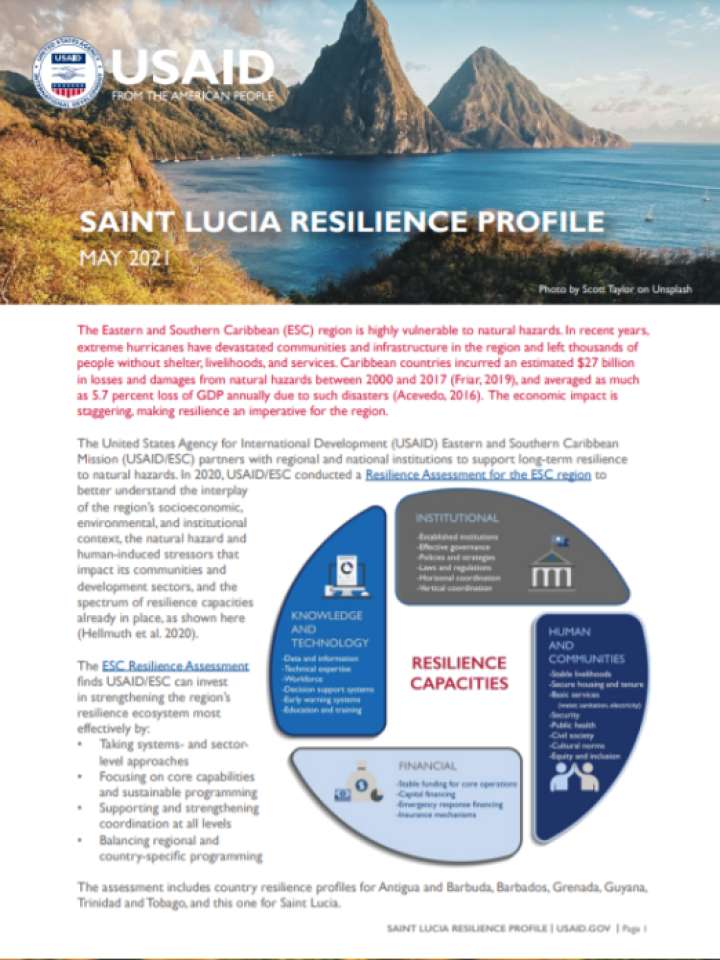Saint Lucia resilience profile
This report summarizes the resilience situation of Saint Lucia. The island country’s population is clustered along its coast with its steep mountains prohibiting inward expansion. While the country enjoys high education and life expectancy rates, poverty and unemployment are pervasive. Like many of its neighbors, Saint Lucia experiences earthquakes, hurricanes, tsunamis, landslides, volcanic activity, flooding, and drought. Saint Lucia’s disaster and emergency management legislation is strong, but focuses on preparedness and response at the expense of planning and mitigation.
The report indicates that despite the presence of disaster risk legislation in Saint Lucia, they are limited in application and enforcement, in part due to inadequate monitoring for compliance. There have been several projects aimed at measurably reducing vulnerability to natural hazards and the adverse impacts of climate change in Saint Lucia, however the country currently lacks the capacity to undertake predictive disaster analysis to define risk scenarios and there is insufficient incentives offered to trigger and maintain engagement with other key stakeholders in climate adaptation measures. Additionally, stakeholder consultations indicated that they require more locally based support focusing on rapid needs assessments. Its community-based resilience measures must develop a multi-hazard approach required for a more effective, sustainable, and comprehensive disaster resilience. One of the biggest challenges for Saint Lucia is in finance as emergency and contingency funds are poorly-funded and public finance is vulnerable to shocks.
Explore further
